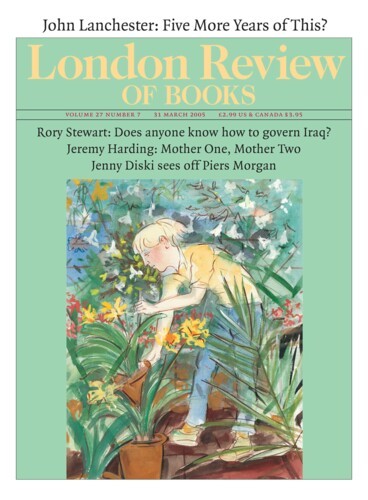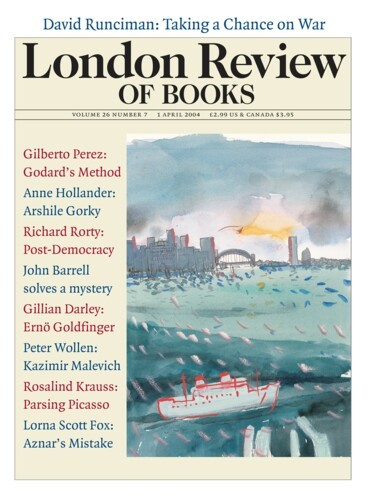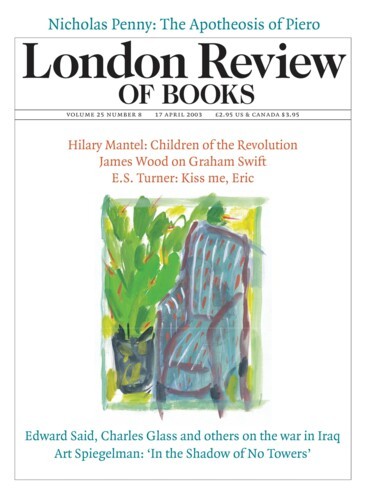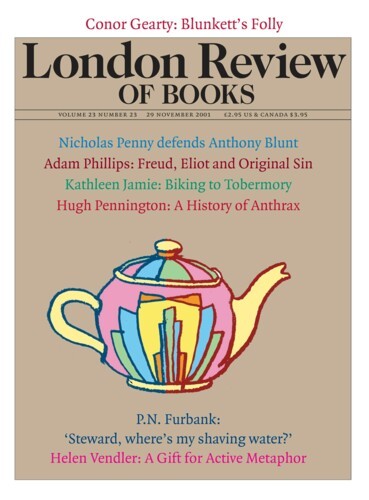The Undesired Result: Betjeman’s bêtes noires
Gillian Darley, 31 March 2005
The dust jacket of the final volume of Bevis Hillier’s epic life of John Betjeman shows the poet laureate seized by giggles. In this lengthy coda to Hillier’s authorised biography Betjeman appears in many lights, but he’s rarely carefree. ‘Nothing frightens me more than the thought of dying,’ he told a friend in 1958. He was 52, had a well-tried Christian faith...




